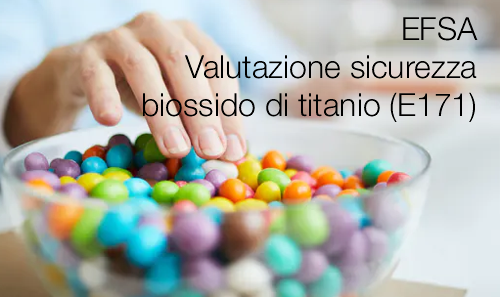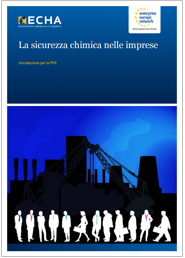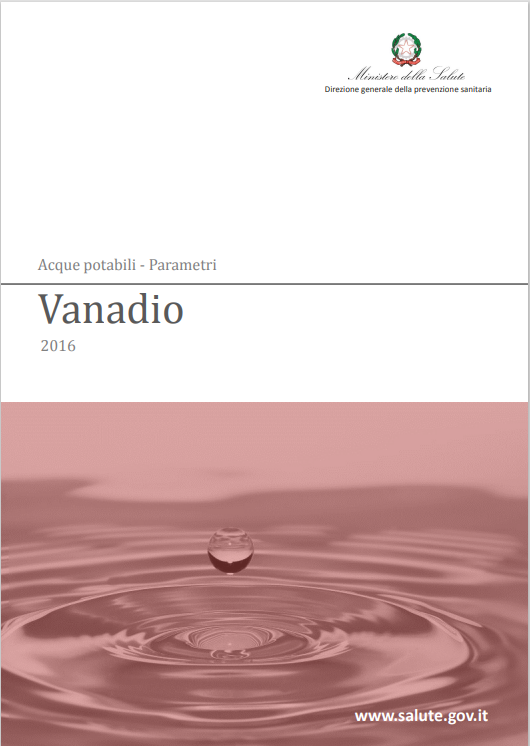Informazione tecnica HSE / 25 ° anno
/ Documenti disponibili:
45.628
/ Documenti scaricati: 34.650.372
/ Documenti scaricati: 34.650.372
Final Report ECHA August 2021
The purpose of the study was to investigate the current state of knowledge regarding the chemical recycling of polymeric materials (e.g., plastics, rubber) from waste. The specific objectives of the study were the collection of information, through the review of literature, the consultation of experts and the development of case studies, and the preparation of a report on the following areas: sources, main materials, substances and processes of chemical recycling; current performance of chemical recycling technologies; opportunities and challenges; benefits in the context of the circular economy; readiness level of different technologies and regulatory oversight.
Chemical recycling is used for processing various types of waste, including biomass, concrete and plastic waste. Only a small part of all plastic waste ever produced has been recycled or incinerated, with the rest accumulating in landfills and becoming ubiquitous in the natural environment. The importance of reducing plastic pollution has been recognised in various EU strategic documents, where chemical recycling has been considered among various potential solutions to contribute to recycling of plastics. Considering the scale of plastic pollution and the potential role that chemical recycling could play in addressing some of the related issues, this study focuses on chemical recycling of plastic waste. The research questions were organised into six topics: chemical recycling technologies, waste streams, recovered substances, materials and waste residues, chemical recycling and substances of very high concern, chemical recycling and policy developments and chemical recycling and tracking systems.
It should be noted that the study focuses on the European Union situation and developments in chemical recycling, although relevant studies from other countries have been reviewed where appropriate.
To address the research questions, the authors reviewed 229 research and grey literature sources and interviewed 22 experts in chemical recycling. The review covered literature published since 2015 to collect and analyse the most recent information. This selection criterion did not apply to legislation and guidance on its implementation. The expert consultation was aimed at complementing and crosschecking the information found in the literature through expert judgement. The experts were selected through an internet poll publicised by the authors and the European Chemicals Agency and consulted using the semi-structured interviewing method. Thematic analysis was applied for the interpretation of the interview results. The research topics were addressed in the following thematic parts of the study: Chemical Recycling in the Context of the Circular Economy (Section 3), Waste Streams in Chemical Recycling (Section 4), Chemical Recycling Technologies (Section 5), Substances of Concern in Chemical Recycling (Section 6), Regulatory Issues in Chemical Recycling (Section 7), and Technical Issues in Chemical Recycling (Section 8).
The study resulted in six conclusions and four recommendations:
CONCLUSION 1. The lack of clarity in chemical recycling terminology leads to confusing conclusions on the potential role of chemical recycling in the circular economy. In scholarly literature, the concept of ‘recycling’ has a broader meaning than in EU regulatory documents and includes fuel as a possible product of recycling. Production of fuel by means of chemical recycling received substantial attention in scholarly literature. However, civil organisations criticise the production of fuel through chemical recycling, pointing to the associated environmental impacts. In grey literature, there is a lack of clarity on what technologies should be considered as chemical recycling, with some reports classifying dissolution as a chemical recycling technology. However, dissolution does not imply chemical changes in the structure of the recovered polymers, which may be considered a definitive feature of chemical recycling technologies
RECOMMENDATION 1.1 Harmonisation of chemical recycling terminology is necessary for a sound and consistent discussion about the potential of chemical recycling in the circular economy. Papers, reports and regulatory documents should always specify the chemical reprocessing technologies included in their scope. This would allow distinguishing the technologies that meet the definition of ‘recycling’ provided by the Waste Framework Directive from those that do not meet the definition.
CONCLUSION 2. Chemical recycling technologies differ in their potential to contribute to the circularity of plastics. Based on the qualitative evaluation of research papers on chemical recycling, the established technologies – pyrolysis, gasification and chemolysis – vary in their ability to ensure the circularity of plastics. Pyrolysis and gasification produce by-products and non-reusable residues that need to be disposed of. Both technologies mostly produce intermediates that require further processing to become either chemical products, fuels, or energy, and therefore do not result in circular closed-loop systems for plastics. Both technologies can treat heterogeneous streams of plastic waste, including mixed and contaminated post-consumer plastic waste, and could therefore complement mechanical recycling in dealing with waste streams that otherwise would be landfilled or incinerated. Chemolysis is reported to produce monomers of a virgin-grade quality. The literature search did not identify discussions on by-products or residues of chemolysis.
RECOMMENDATION 2.1 The potential of specific chemical recycling technologies to contribute to the circularity of plastics should be evaluated case-by-case to avoid mistaken generalisations of advantages/disadvantages of one technology to the whole field of chemical recycling. CONCLUSION 3. Analysis of research literature has shown fragmented knowledge about the fate of substances of concern in various chemical recycling processes. Available studies mainly focused on various types of pyrolysis of e-waste and the fate of brominated flame retardants; however, no studies were identified for other established chemical recycling technologies. It is important to note that various pyrolysis technologies demonstrated different abilities to cope with substances of concern. The findings of the identified studies do not provide a solid ground for making conclusions about the fate of substances of concern in all established chemical recycling processes. Furthermore, it is not clear if the technologies analysed in the scholarly literature have been applied in industrial settings.
RECOMMENDATION 3.1 The behaviour and fate of substances of concern in gasification and chemolysis should be investigated. Moreover, in order to make sound conclusions, such investigation should be carried out in commercial or pilot chemical recycling plants applying gasification, chemolysis or any other chemical recycling technology.
CONCLUSION 4. Regulatory issues in chemical recycling are not discussed in the scientific literature. Several issues raised in mechanical recycling could be relevant to specific chemical recycling technologies as well. These issues include insufficient measures to promote recycling of plastic waste in the EU directives on packaging, construction materials and end-of-life vehicles, the absence of information about the presence of SoCs in plastic waste streams and regulatory uncertainties over the waste classification, end of waste criteria and related duties of the operators. However, the opportunities and challenges posed by the REACH Regulation and other chemicals, waste and product safety legislations remain specific to each chemical recycling technology. It should be noted that important steps have been taken to review the EU directives and overcome their weaknesses related to recycling.
RECOMMENDATION 4.1 The regulatory issues in chemical recycling should be studied on a case-bycase basis, separately for each type of chemical recycling technology.
CONCLUSION 5. Digital technologies contribute to improving the traceability of substances of concern in recycling. Some chemical recycling technologies are either sensitive to specific constituents of plastic waste or can process only some sorts of plastic waste. The literature analysis has shown that many databases with information about chemical substances contained in articles exist to assist recyclers in locating information about substances of concern. Screening and sorting technologies in recycling facilities help to identify substances of concern. The importance of sorting the incoming waste was recognised in the stakeholder interviews. However, the databases lack historical information about legacy substances of concern, and information is dispersed across various datasets with different access and search options. In addition, screening technologies vary in their ability to detect SoCs, with the most accurate and sophisticated technologies also being the most expensive.
CONCLUSION 6. Blockchain technology offers a solution for monitoring substances of concern in plastic waste; however, its implementation requires substantial inter-organisational and organisational efforts. The main advantages of blockchain are decentralised management, verifiability of information, ability to track any event or transaction at different lifecycle stages of plastic materials and goods from manufacturing to end-of-life. However, the benefits of blockchains for recyclers come at the cost of large-scale digital transformation of the whole supply chain. The success of such initiatives depends on commitment, investments and collaboration between multiple players and requires a substantial amount of time to make blockchain solutions functional. Different existing digital tools – databases, screening and sorting technologies, digital and printed tags can be combined for satisfying the practical needs of recyclers.
ECHA 2021
Add more in attachment

EFSA, 2021
L'EFSA ha aggiornato la sua valutazione di sicurezza dell'additivo alimentare biossido di titanio (E 171), a s...

REACH / CLP / BPR: incidono anche nelle medie e piccole imprese
Il regolamento UE concernente la registrazione, la valutazione, l’autorizzazione e la restrizione delle...

ID 18804 | 26.01.2023 / In allegato
Mentre il vanadio elementare non si trova in natura, esistono composti del vanadio in 65 diversi minerali ed in associ...
Testata editoriale iscritta al n. 22/2024 del registro periodici della cancelleria del Tribunale di Perugia in data 19.11.2024